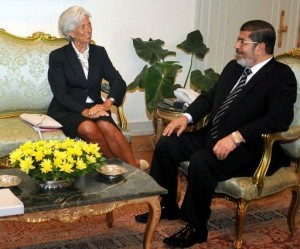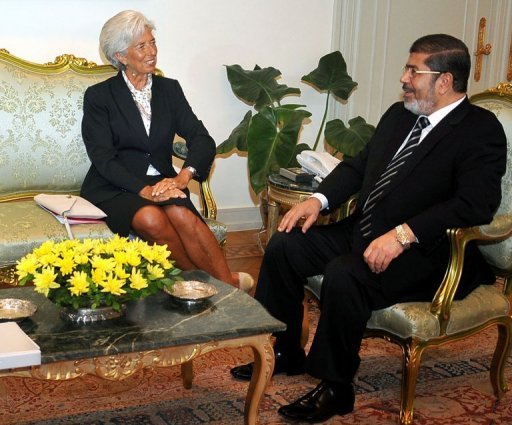
(AFP File Photo /Egyptian Presidency)
Egypt’s foreign debt has increased by $8bn, reaching $42bn as of last April compared to $34.4 last year, a Finance Ministry official stated. Egypt’s rate of external debt recorded right after former president Hosni Mubarak was ousted was around $33bn.
The debt increase has led global finance rating company Standard & Poor’s to lower the credit ratings of local banks National Bank of Egypt, National Societe General Bank (NSGB), Banque Misr and Commercial International Bank (CIB) to CCC+.
Internal debts hit an alarming EGP 1.4tn, equivalent to about $200bn.
This rise in debt is also expected to halt the country’s ability to receive more loans.
Egypt has already received loans from several neighboring countries, including ones from Qatar and Libya .
Qatar has so far provided $8bn, Libya on the other hand has sent $2bn without interest for five years and a grace period of three years.
President Mohamed Morsi also made an unexpected loan request from Russia worth $2bn, which Russian President Vladamir Putin rejected.
Turkey was also among the countries that provided financial support, lending Egypt $1bn toward the end of 2012. Saudi Arabia also loaned Egypt $4bn, including $1.5bn in the form of non-refundable grants.
Qatar’s share alone of Egypt’s official foreign debt, which currently stands at $38.8bn, has risen to more than 16%. The country’s share of Egypt’s debt is expected to reach $41.8bn once the new loans are added.
Egypt is currently in the middle of talks with the International Monetary Fund (IMF) over the proposed $4.8bn loan package.
Morsi had once said in a televised interview that the IMF loan is “recognition of the international confidence in Egypt’s economy, which will foreign investments in the country”.




